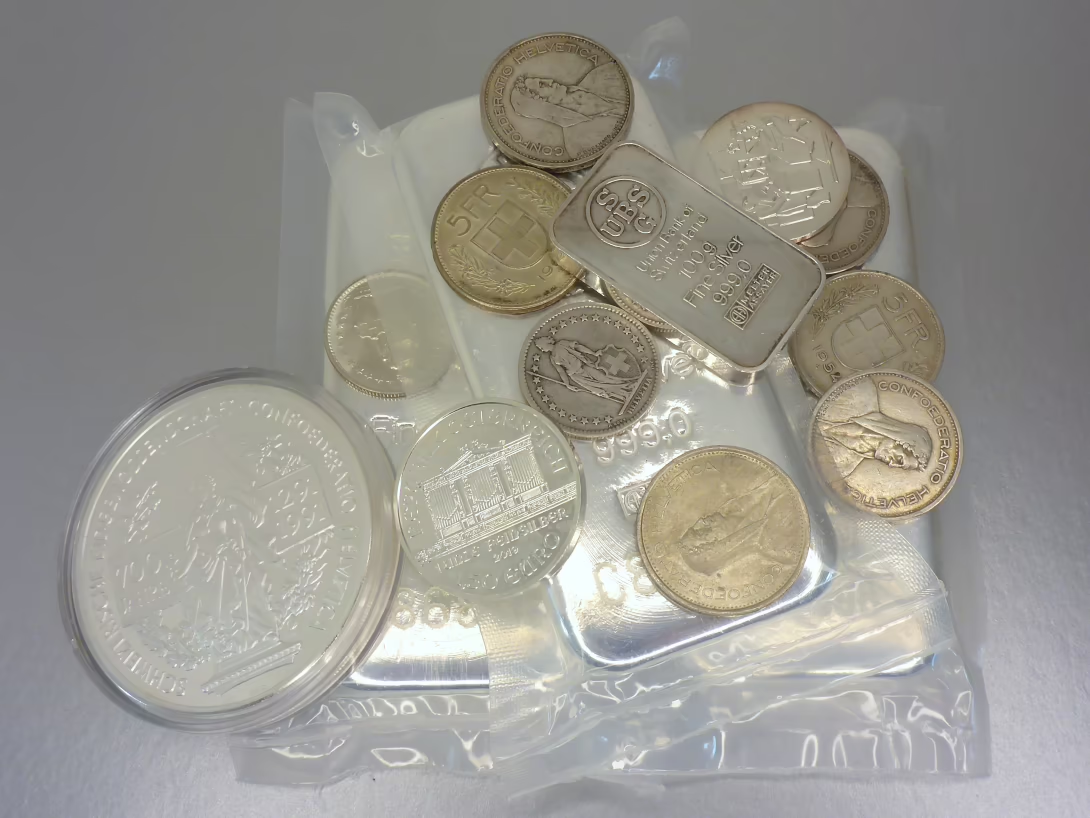Bars, coins and medals
Summary
-
Coins are or were means of payment.
-
Ingots are metal bars or plates that serve as raw materials or commodities.
-
Medals are elaborately decorated metal discs which do not have the status of means of payment.
If you want to buy precious metals such as physical silver and gold, you can choose between bars, coins or medals. But what is the difference between these three products? We explain the difference in this article
Important note: Disclaimer and riskThis blog post is intended solely for informational purposes and the critical assessment of facts. We would like to help you form your own opinion and better understand the financial markets. This text does not constitute investment advice!
|

The coin as a means of payment
Even though people are increasingly paying by card these days, they have all seen and held a coin at least once. However, they probably do not yet fully realise what makes a piece of metal a coin. A coin is or was once an official means of payment. Today, this usually means that the issuing country and the market value are noted on the coin. Examples of this are the old silver coins of Switzerland, the gold Vreneli or the silver Philharmonic whose market value of €1.50 is imprinted here. The Krugerrand is also a coin, but it is an exception as its market value is not minted. The Krugerrand is an official means of payment under the laws of the state of South Africa and its value is redetermined every day.
Particularly rare vintages of coins can have a higher collector's value than the metal value.
Trade coins, medals and bars on PreMeSec.ch!
The medal the collector's item
Medals are similar in appearance to coins, but unlike coins they are or were never an official means of payment. Like coins, they are richly decorated on one or both sides. They are often issued to commemorate special occasions.
Due to their motifs, medals can have a collector's value, but this is of little importance to precious metal investors.
Bars the raw material
Let's turn our attention to bars, which are intended as a raw material, commodity or investment product. Ingots have been around since the beginning of metal processing. The shape and size varied greatly depending on the metal, area of use and time of origin.
Today, precious metal bars are highly standardised and have various important information stamped on them.
Internationally, the London Bullion Market Association (LBMA) has established itself as the standardisation organisation for precious metal bars. As a minimum, the standard requires that at least the bar's fineness and the manufacturer's stamp be stamped on it. For standard bars (approx. 12 kg for gold and approx. 31 kg for silver), the shape with the trapezoidal cross-section is also specified in order to make the bars easier to hold and lift.
The specifications and certifications of the LBMA have also been incorporated into national legislation. For example, no VAT is levied on gold bars from an LBMA-certified manufacturer.
Bars or plates?
Technically speaking, an ingot is an unprocessed bar of metal which is produced by a casting process. Small bars of 100 g and smaller are no longer usually cast but produced by stamping. Colloquially and commercially, however, these gold plates are also referred to as bars.
Coin bars
A mixture of coin and bar are the so-called coin bars produced for the German market. For legal reasons, less VAT was charged on silver coins in Germany than on bars. Silver refineries and dealers took advantage of this by giving bars a mintmark with the authorisation of small states such as the Cook Islands. This turned the bars into coins and allowed them to be traded with reduced VAT. Coin bars have no significance in Switzerland, but due to the country's proximity to Germany, they are occasionally available.
Frequently asked questions about coins, bars and medals
Are silver coins subject to VAT?
-
Yes, even if silver coins are official means of payment, VAT must be paid on them in Switzerland. This applies regardless of whether the coin is still valid or has been withdrawn from circulation.
Are silver bars for investment purposes exempt from VAT?
-
No, even if silver bars are purchased for investment purposes, VAT must be paid on them. The legislator regards all silver as a raw material or commodity.
